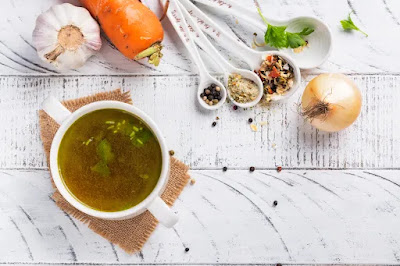A thorough manual for getting a complimentary body and a better lifestyle
You may need to reconsider assuming you are investing in energy production to get rid of a bloated stomach because you think you will have to eat food sources that are nutritious but boring and ugly.
Did you have any idea that the bulge can be prevented by tweaking your eating routine a bit and ingesting common types of foods and treatments? You can get a compliment body by eating a variety of foods that are rich and tasty.
As reported by The Message, Dr. Megan Rossi, commonly known as The Stomach Wellbeing Specialist, researched in her book Eat Yourself Solid that despite the fact that there are complicated variables that contribute to a bulge, it tends to shrink, or even try not to altogether. to introduce small dietary improvements.
He recommends limiting food sources that contain FODMAPs, a class of carbohydrates that the small digestive tract has trouble keeping down and that can exacerbate the problem.
She further encouraged staying away from large dinners, trying to bite your food completely, and overall eating less every now and then.
Below are three simple dietary changes you can make to reduce midsection fat:
Get rid of the vegetables
In addition to being a decent source of plant-based protein and important micronutrients, vegetables like peas, beans, chickpeas and lentils are also high in fiber and FODMAPs.
As another option, try the tinned, fully rinsed variety and stick to a more modest portion size – a quarter cup – to avoid bulging. Whole grains like quinoa, rice, and oats are great substitutes for vegetables.
One food known to contribute to swelling is gluten awareness, and quinoa is particularly high in protein and suitable for those with this sensitivity.
A 250g pocket of cooked quinoa, 150g chopped feta, a portion of diced cucumber, 150g chopped strawberries and a few small bunches of finely chopped mint leaves can be combined to make a quick and basic quinoa salad. Garnish with 2 tablespoons of extra virgin olive oil, 1 teaspoon of honey, the juice of 1 lime, and a little salt and pepper.
Onions are not
The staples of the kitchen, onions and garlic, are also high in fructans, a type of soluble fiber that can make you feel bloated. You can fulfill your allicin craving without the stress of windfall by using a green piece of scallion, adding chopped chives, or using garlic oil.
Dr. Rossi also introduced fennel as a "wonderful substitute" for flavor and an easier-on-the-stomach surface.
Set your broiler to 200C/180C Fan/Gas 6 and prepare this tasty chicken and fennel dish for dinner. In the bottom of a baking dish, chop a few sliced, peeled carrots, a fennel bulb and a quartered lemon.
With the skin looking up, orchestrate eight chicken thighs on top. Drizzle with olive oil and season to taste. Consolidate 1 teaspoon of honey with 200 ml of chicken broth. Fill the container with the mixture, then heat for 35 to 40 minutes, or until the chicken is very cooked.
Use natural products sparingly
Dr. Rossi further shared that natural foods like apples are high in FODMAPs, fructose, and fiber, all of which can make you feel bloated. Likewise, you should consume less apricots, cherries, dates, figs, peaches, pears and plums.
Blueberries, strawberries, raspberries, citrus fruits and grapes are more stomach-friendly choices. To try not to go too far into the stomach, try to gradually reduce access to the natural product for each piece.
An organic product that has been cooked has more easily consumed fiber. With live yogurt, try this low-FODMAP strawberry, ginger, and rhubarb compote; the probiotics it contains will help with assimilation.
Add 250g of chopped strawberries, 250g of chopped rhubarb, 1 teaspoon of vanilla concentrate, 1 tablespoon of peeled and finely ground ginger, 1 tablespoon of maple syrup and 1 tablespoon of water to the pan and simmer for 20 minutes on low. Allow to cool and store refrigerated in a water/air holder.











0 Comments